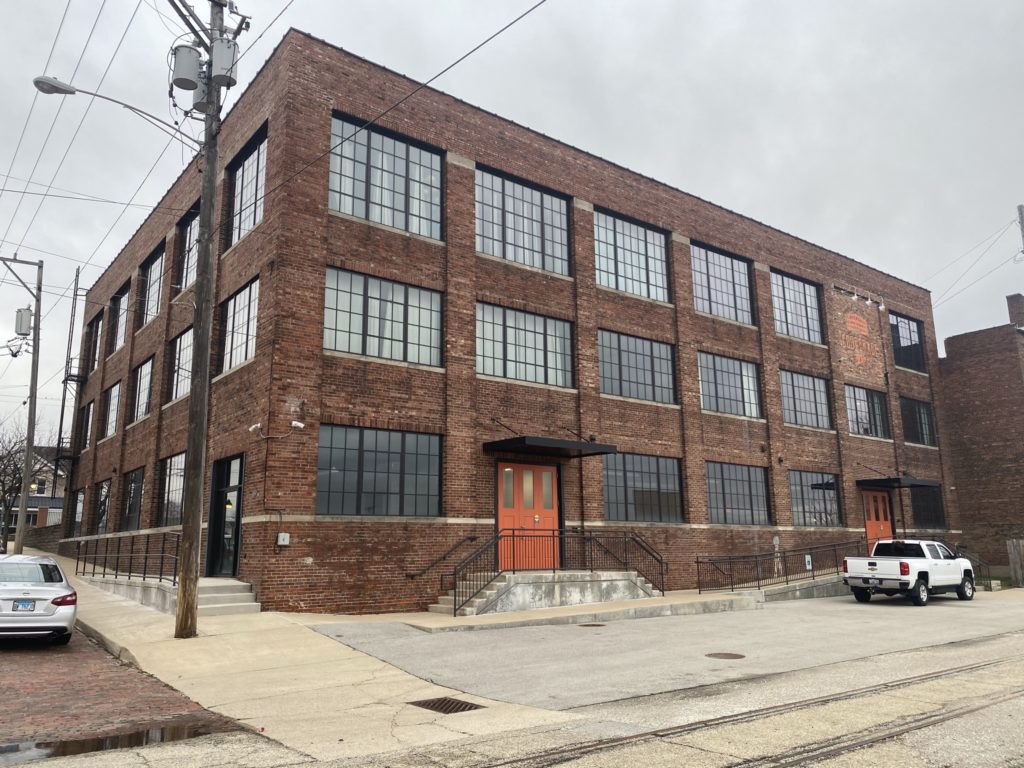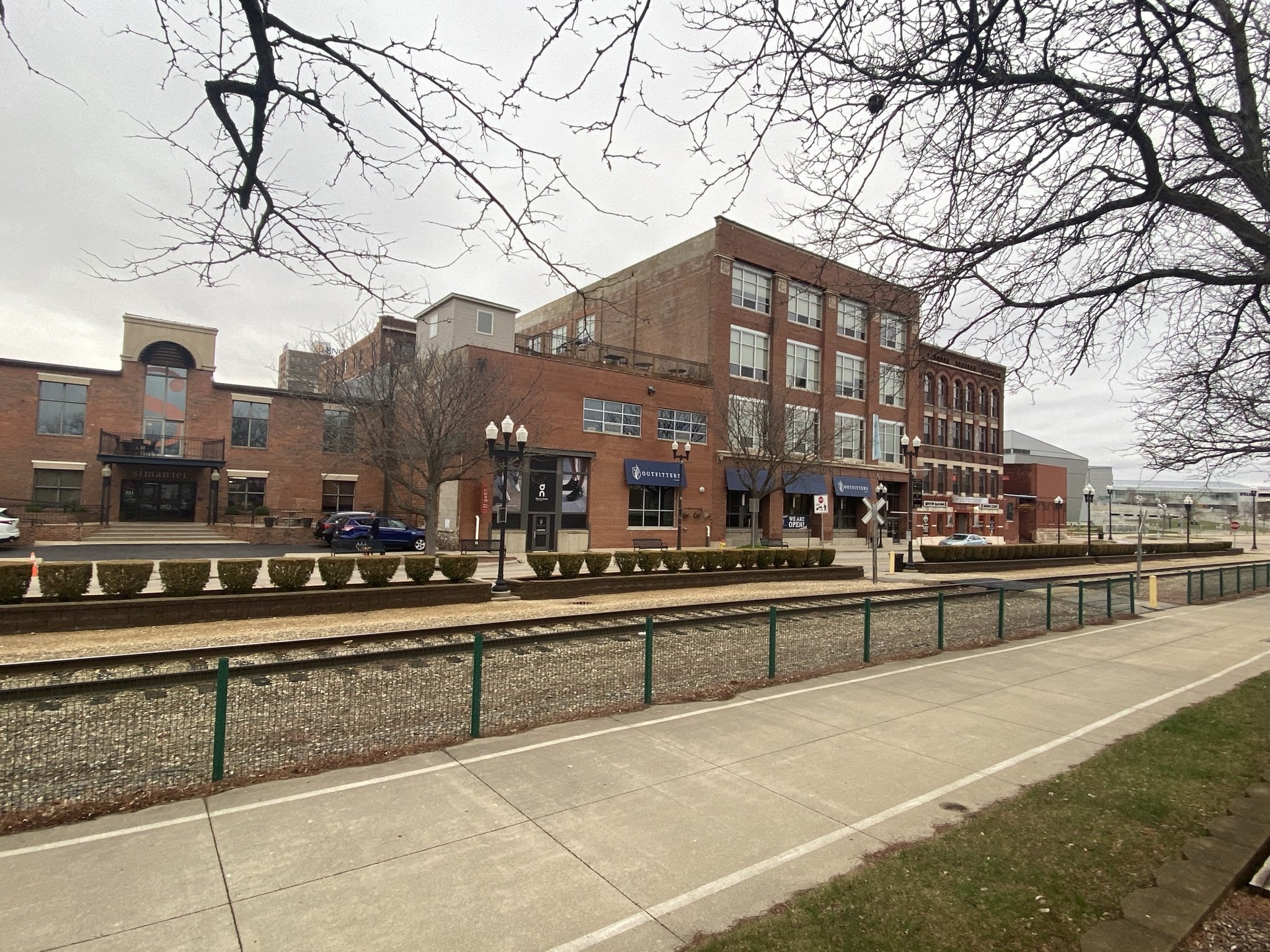
by Chris M. Stevens
PEORIA, Ill. — Hold onto history. The lessons of life linger within what is left. A culture continues when it clings to the remnants of days gone by. Why? Memories provide the path for the past to act as prologue.
Thanks to the drive to restore and revitalize Peoria’s Warehouse District, projects of Historical Preservation have reborn several of the still-standing structures. What did daily work life look like 100 years ago? One clear cut clue: the structures left. As an example the Cudahay Packing Company, which sold wholesale meat, now houses the ultra-modern Black Band Distillery.
Union-affiliated P.J. Hoerr, Inc. had served as general contractor for the complete restoration of the historical structure. CEO Paul Bright says, “I’ve been directly involved and I really enjoy it,” adding, “so it’s a labor of love.”
Now that the revitalization of Peoria’s Warehouse District continues, a Carl Sandburg comment comes to mind, “Nothing happens unless first we dream.”
And local dreamers see a vibrant, pedestrian-friendly, mixed-use of commercial, residential and retail, for the Warehouse District. Thankfully construction in the Peoria area holds a history and reputation of being a Union town. One prominent reason? The Building Trades have for more than a century, and continues today, to provide professional quality construction.

With several unions passing the 100-year mark, the skilled members of the Building Trades and their partners the union-affiliated contractors take pride in the still standing structures. These contractors and union members back in the day had built these buildings with their superior skill.
Quality on Display Every Day.
Dan Bagley, head of the Restoration Division of union-affiliated Otto Baum, Inc. says, “We partner with the Bricklayers, Carpenters, Finishers, Laborers and Operators.” Not only do the union members undergo both apprenticeship and continuous training provided by their own union, Bagley says Otto Baum, “also sends employees for specialized training at the International Masonry Institute and the Restoration Institute.”
President Rich Boyd of Bricklayers Local 6 says, “Restoration is huge across the country right now, “ adding, “I’m amazed at the skill set of the people back then. What they did with a trowel, hammer, level and chisel, using what we would call primitive tools, is incredible.”
And in a city blessed with several historical structures, for example both the Hall of the Grand Army of the Republic and Peoria City Hall sit on the National Register of Historic Places, the Warehouse District has exploded with Historical Preservation projects.
Several contractors and subcontractors affiliated with the unions have provided professional construction in the renovation and rebuilding of the several historical preservation projects, notably new and improved infrastructure in the Warehouse District. For this article let’s talk with two union-affiliated contractors with vast experience in such projects, Otto Baum and PJ Hoerr.
Started in 1937 Otto Baum has grown into four divisions, which includes Historical Restoration. Bagely says, “We do restoration on bridges, monuments, churches, historic buildings, and many other structures.” Examples. Pere Marquette Hotel, Commerce Bank, and others.
Started in 1914, PJ Hoerr also has grown into several divisions and, “We do quite a bit of restoration work,” Bright says, “almost every year we do a project.” Examples. Black Band Distillery, Pop-A-Shot Headquarters, and others.
The federal, state and even local governments maintain control of the restoration process. “They set proper procedures and often materials,” Bagely says, “plus the means and methods as well as the aesthetics.”
Bright adds, “Every building is different. Some you have to follow strict requirements and others you can do what the owner wants.”
All Historic Preservation projects must meet specific demands and requirements. The complexity of a large project usually results in an architectural or engineering firm taking the lead. These companies provide assistance to the contractors according to Bagely who adds, “We will do trial repairs to help get to the proper design.” Otto Baum also works closely with the local “Historical Society and Landmark Commission,” he adds.
Bright says PJ Hoerr works with AnnaMarie Bliss, PhD, former faculty member of the U of Illinois Architecture Department. “She works with the state’s Historical Preservation Agency,” adding, “she knows the language and what they want.”
The designation of historical property rests on the time frame of the structure, the significance of an event that occurred there, or if a particular individual is associated with the property. “Some of that information can be found in old documents,” Bagely says.
Both Otto Baum and PJ Hoerr visit courthouses, libraries and historic agencies in search of information. “We like to review the old blueprints if possible,” Bagely says.
Bright laughs and adds, “We almost never find them, because they get lost,” adding, “we do like to find old photos of the building.”
Historical Preservation projects also require what can be an exhaustive search for materials.
“We always prefer to use original materials if possible,” Bagely says, “which can take months to source and can be expensive. A lot depends on the owner, who is funding the project, and the historical demands.”
Bright says, “We use both salvaged and new materials. And we reuse the original material as much as possible. One of the most expensive items are historically accurate windows.” Only a few companies manufacture such products. “There is a long lead time so that’s the first thing we try to find.”
Boyd offers an example when he says, “The mortar of yesteryears was a lot different. So there are processes to match the color and texture. Older mortar remains a lot softer than today’s product and “the modern mortar won’t work with the old.”
Bagely says a restoration includes unique safety challenges. “We make sure both the workers and public are safe.” During demolition often silica dust, lead paint, asbestos, and other toxic items fill the air. “Our number one priority is safety, so we make sure our workers are trained in the use of proper PPE’s.” He offers the example of when needed, workers wear a Powered Air Purifying Respirator, (full-face).
Bright says PJ Hoerr also spares no effort to protect the workers and public. “There are usually hazardous materials present on the old structures. There will be a hazardous materials inspection and they will run tests on what they find, then mark where it needs to be addressed,” adding, “our folks are diligent about keeping the public away.”
As an example Bright cites the Black Band Distillery project, “It was a slaughterhouse, so we didn’t know what we would find on the floor and walls.”
As the push to restore the glory of the Warehouse District continues, expect several more projects to provide an upgrade to the old buildings. Thankfully, the union-affiliated contractors and members of the union Building Trades will continue to lend their highly-developed skills to the effort. Boyd says, “Old buildings have a lot of character. And they remind us of the architecture of the time,” adding, “it’s nice to bring a building back to its original beauty.”
Peoria wins, the people win, the Warehouse District remains revitalized, and history marches into the future.


